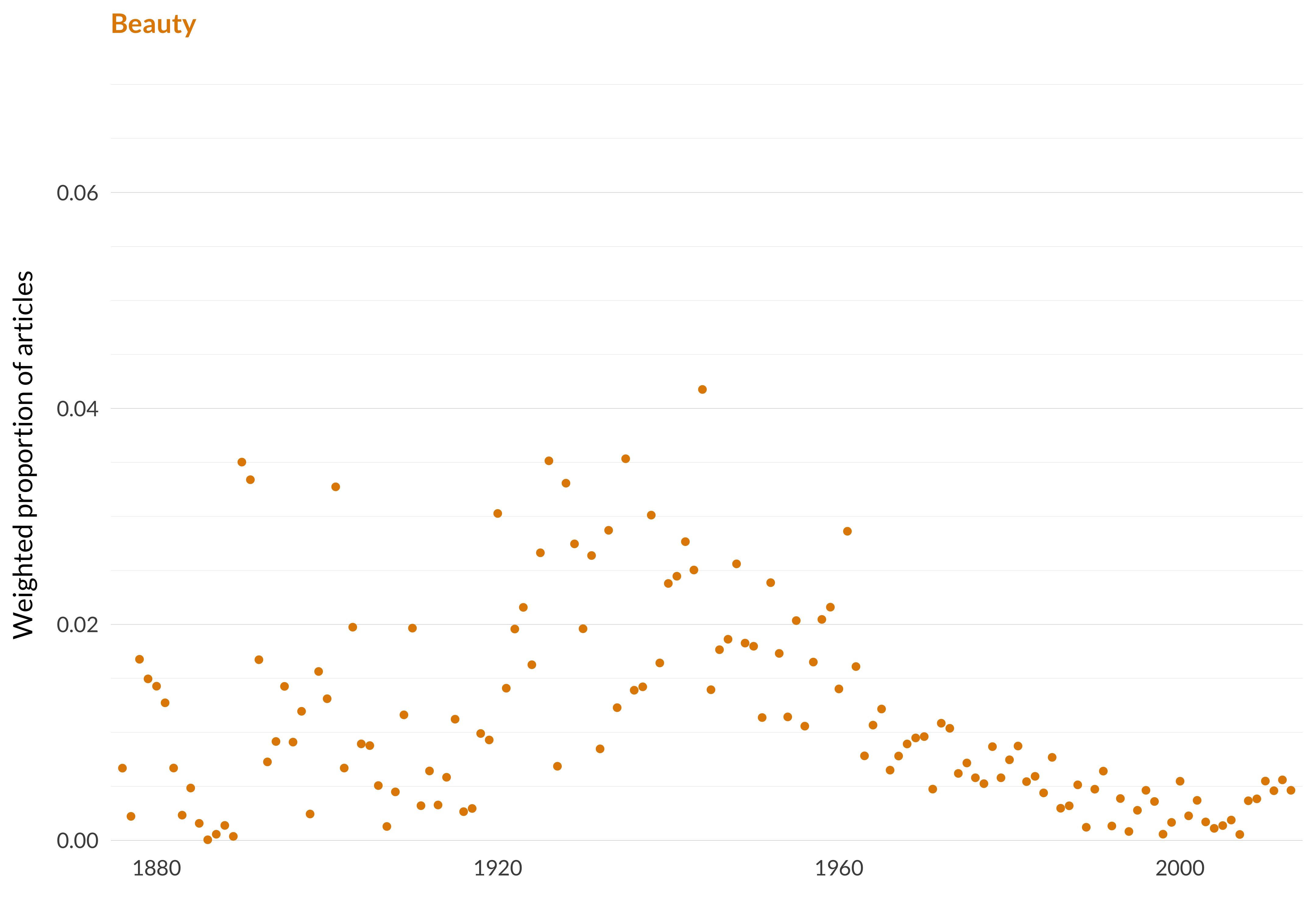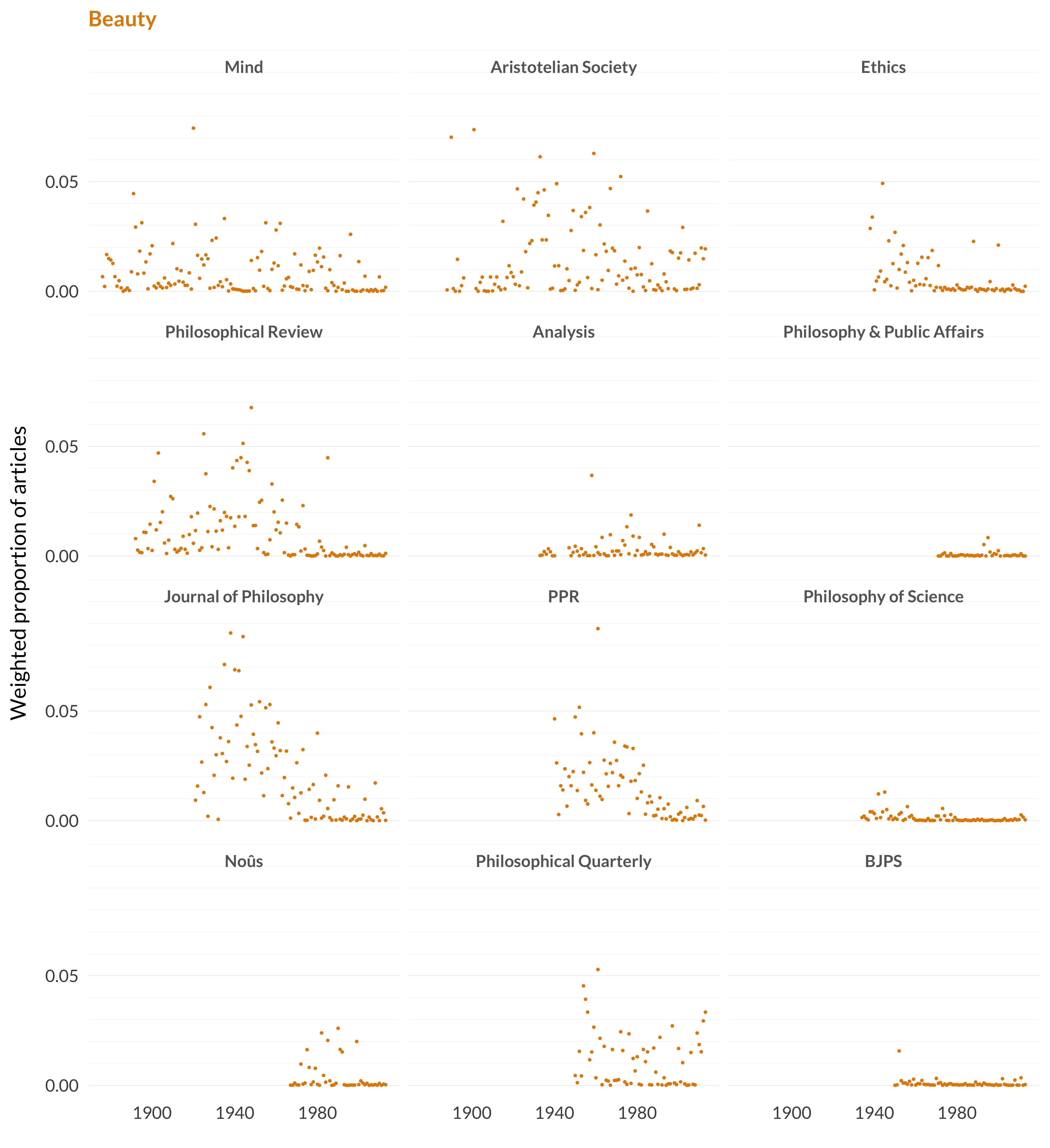2.8 Beauty
Category: Aesthetics
Keywords: artistic, esthetic, art, aesthetics, poetry, poem, aesthetic, music, artist, critic, literary, arts, musical, beautiful, beauty
Number of Articles: 560
Percentage of Total: 1.7%
Rank: 8th
Weighted Number of Articles: 319.4
Percentage of Total: 1%
Rank: 43rd
Mean Publication Year: 1954.3
Weighted Mean Publication Year: 1954.2
Median Publication Year: 1954
Modal Publication Year: 1961
Topic with Most Overlap: Ordinary Language (0.0597)
Topic this Overlaps Most With: Depiction (0.0312)
Topic with Least Overlap: Formal Epistemology (0.00018)
Topic this Overlaps Least With: Explanation (0.00021)

Figure 2.27: Beauty.

Figure 2.28: Beauty articles in each journal.
Comments
The striking thing about this topic is how confident the model is that articles from both ends of the timeline belong together.
| Subject | Probability |
|---|---|
| Beauty | 0.4932 |
| Idealism | 0.1749 |
| Life and value | 0.0981 |
| Psychology | 0.0604 |
| Ordinary language | 0.0429 |
| Subject | Probability |
|---|---|
| Beauty | 0.6125 |
| Value | 0.1799 |
| Theories and realism | 0.0392 |
| Arguments | 0.0354 |
| Universals and particulars | 0.0293 |
| Norms | 0.0281 |
It knows that Bosanquet is an idealist and McIver Lopes is not. But it also knows that despite that, they have a subject matter in common. This isn’t something you see for many other topics. The same thing happens with the temporal paradoxes and, to a lesser extent, with colour. But it is particularly marked here.